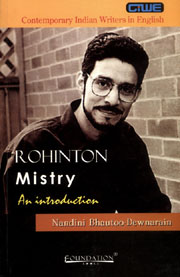Book contents
- Frontmatter
- Contents
- Series Editor's Preface
- 1 Introduction
- 2 The Local and the Universal
- 3 ‘Otherness’ in Mistry
- 4 Politics in Mistry's Fiction
- 5 Recurring Themes
- 6 Rohinton Mistry and Indian Writing in English
- Topics for Discussion
- Appendix A The 1975 Emergency
- Appendix B MISA
- Appendix C The History of the Bangladesh Conflict
- Appendix D List of Honours and Awards
- Bibliography
Appendix C - The History of the Bangladesh Conflict
Published online by Cambridge University Press: 05 November 2011
- Frontmatter
- Contents
- Series Editor's Preface
- 1 Introduction
- 2 The Local and the Universal
- 3 ‘Otherness’ in Mistry
- 4 Politics in Mistry's Fiction
- 5 Recurring Themes
- 6 Rohinton Mistry and Indian Writing in English
- Topics for Discussion
- Appendix A The 1975 Emergency
- Appendix B MISA
- Appendix C The History of the Bangladesh Conflict
- Appendix D List of Honours and Awards
- Bibliography
Summary
Prior to the Bangladesh Wars, Pakistan consisted of both West Pakistan and East Pakistan (now Bangladesh). General elections were held in Pakistan in the 1970s. Rather than toe the line of the seat of power in West Pakistan, breakaway elements from East Pakistan began to make themselves heard. An East Pakistani party headed by the popular Bengali leader Mujibur Rahman won the majority of seats in the new assembly. The message that the East Pakistanis wanted an autonomous government was clear. However, the autocratic General Yahya Khan, the then leader of Pakistan, refused to recognize the democratic verdict and denied Mujibur Rahman's demands for the independence of East Pakistan. He ordered a military massacre in Dhaka, the capital of East Pakistan which led to political riots. These riots worsened after the arrest of Mujibur Rahman who was imprisoned in West Pakistan.
This marked the onset of a massive influx of refugees into India across the border from Bangladesh, fleeing the martial rule imposed by the West Pakistani army. It is estimated that no fewer than 10 million refugees fled East Pakistan across the border to India. It was at this point that India intervened with the help of the Soviet army and forced West Pakistan to withdraw troops from East Pakistan. The support of the Soviet Union under an international agreement pact for mutual support in case of threat to national sovereignty allowed India to provide both sanctuary and military training to the resistance factions in Bangladesh, organized as the Mukti Bahini (Liberation Army). Pakistan reacted to this by bombing Indian territory.
- Type
- Chapter
- Information
- Rohinton MistryAn Introduction, pp. 118Publisher: Foundation BooksPrint publication year: 2006



